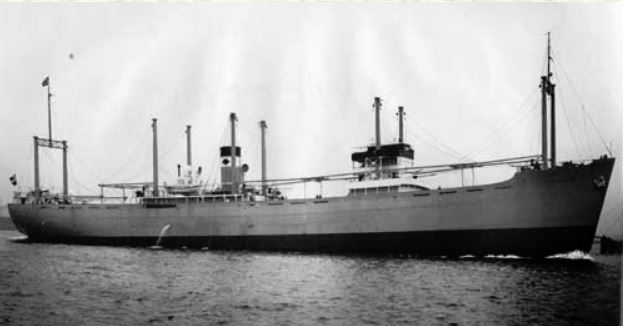Difference between revisions of "SS Skagerak"
From Our Contribution
(→Remarks) |
|||
| Line 38: | Line 38: | ||
==Remarks== | ==Remarks== | ||
| − | One of 19 Norwegian ships that were on the other side of the world when war broke out. The were chartered by the US government. When Norway was invaded on 9 Apr 1940 Skagerak was in the Pacific enroute to Japan with a general cargo from the US. Skagerak continued to her destination, arriving in Kobe on 30 Apr 1940, where they were met by suspicion and countless "interrogations". Skagerak had 2 more voyages to Japan (Osaka), both times carrying rice from Siam and Indo-China. | + | One of 19 Norwegian ships that were on the other side of the world when war broke out. The were chartered by the US government. When Norway was invaded on 9 Apr 1940 Skagerak was in the Pacific enroute to Japan with a general cargo from the US. Skagerak continued to her destination, arriving in Kobe on 30 Apr 1940, where they were met by suspicion and countless "interrogations". Skagerak had 2 more voyages to Japan (Osaka), both times carrying rice from Siam and Indo-China. |
| − | + | Caught by a Tropical Storm in Suva on 23 Feb 1941, she was washed ashore, but was able to be refloated after the storm had passed. On 12 Apr 1942 she struck a mine when approaching Suez and was badly damaged, but was repairable. Later, on 15 Nov 1942 she collided with another ship ''Zvir'' in her convoy. While the other ship sank, Skagerak was damaged but could continue. From when Norway capitulated to Germany (9 Apr 1940) until the end of the war, ''Skagerak'' visited 173 ports, having sailed 244,684 nautical miles while delivering 368,869 tons of cargo. | |
| + | |||
| + | In 1954 she was sold to A/B Paulin Chartering of Finland, and renamed ''J.W. Paulin''. On 1965 she was renamed ''Sofia'' by new owners Cretan SG Co of Greece, and then renamed again to ''Capetan Andreas T in 1966. She was sold to breakers in Whampoa, arriving there on 19 Apr 1970. | ||
==Soldiers carried== | ==Soldiers carried== | ||
Revision as of 21:27, 3 August 2019
 Courtesy Historical Department, MAN B&W Diesel, Copenhagen | |
| History | |
|---|---|
| Name | MS Skagerak |
| Builder/Built | 1936 Burmeister & Wain, Copenhagen, |
| Type | cargo freighter |
| Displacement | 4,244 tons |
Remarks
One of 19 Norwegian ships that were on the other side of the world when war broke out. The were chartered by the US government. When Norway was invaded on 9 Apr 1940 Skagerak was in the Pacific enroute to Japan with a general cargo from the US. Skagerak continued to her destination, arriving in Kobe on 30 Apr 1940, where they were met by suspicion and countless "interrogations". Skagerak had 2 more voyages to Japan (Osaka), both times carrying rice from Siam and Indo-China.
Caught by a Tropical Storm in Suva on 23 Feb 1941, she was washed ashore, but was able to be refloated after the storm had passed. On 12 Apr 1942 she struck a mine when approaching Suez and was badly damaged, but was repairable. Later, on 15 Nov 1942 she collided with another ship Zvir in her convoy. While the other ship sank, Skagerak was damaged but could continue. From when Norway capitulated to Germany (9 Apr 1940) until the end of the war, Skagerak visited 173 ports, having sailed 244,684 nautical miles while delivering 368,869 tons of cargo.
In 1954 she was sold to A/B Paulin Chartering of Finland, and renamed J.W. Paulin. On 1965 she was renamed Sofia by new owners Cretan SG Co of Greece, and then renamed again to Capetan Andreas T in 1966. She was sold to breakers in Whampoa, arriving there on 19 Apr 1970.